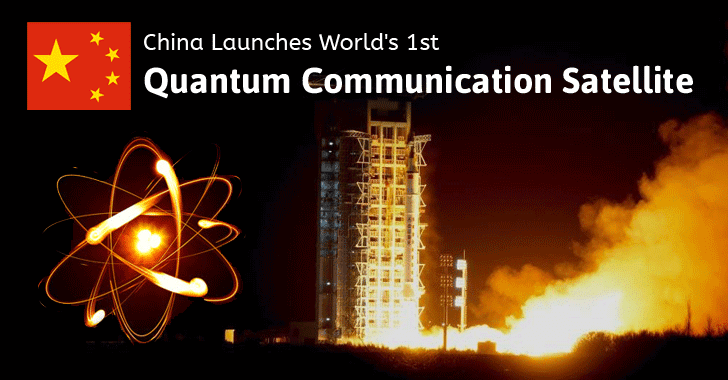In 2016, President Xi Jinping established a national strategy for China to become technologically self-reliant. One of China’s main goals is to surpass the United States and to become the global high-tech leader.
China named quantum informatics a key plank in its 13th Five-Year Plan and the Made in China 2025 plan — which launched China’s bid to dominate high-tech sectors President Xi funded a multi-billion-dollar quantum computing mega-project with the expectation of achieving significant quantum breakthroughs by 2030. He also committed billions to establish a Chinese National Laboratory for Quantum Information Sciences. This center may eventually become a global hub for quantum research and a magnet for future quantum research talent.
In 2018, China had nearly twice as many patent filings as the United States for quantum technology overall, a category that includes communications and cryptology devices, according to market research firm Patinformatics. The United States, though, leads the world in patents relating to the most prized segment of the field — quantum computers — thanks to heavy investment by IBM, Google, Microsoft and others.
The January 2019 Worldwide Threat Assessment report to the Senate conceded the United States’ lead in science and technology had been significantly eroded, mainly because of Chinese gains. Over the past two years, China has aggressively stepped up its pace of quantum research.
Helping oversee China’s program is Pan, whom Chinese media call the “father of quantum.” From his labs at the University of Science and Technology of China (USTC), in Shanghai and Hefei, the 49-year-old leads a team of 130 researchers. In 2017, the journal Nature named him one of “ten people who mattered this year,” saying he had “lit a fire under the country’s efforts in quantum technology.”
When a team of Chinese scientists beamed entangled photons from the nation’s Micius satellite to conduct the world’s first quantum-secured video call in 2017, experts declared that China had taken the lead in quantum communications. In one of the studies, researchers used nanometer-scale semiconductors called quantum dots to reliably transmit single photons—an essential resource for any quantum network—over 300 kilometers of fiber, well over 100 times farther than previous attempts.
Till recently, however, thanks to investments by tech giants— IBM , Google , and Microsoft —the United States had been able to maintain its lead in quantum computing. In 2018, IBM obtained more patents than any other U.S. company. Almost half of its patents were for leading-edge technologies such as artificial intelligence, quantum computing and blockchain. Google recently achieved quantum supremacy by solving a problem in 200 seconds that would take a classical computer 10,000 years to solve. New research suggests that lead has extended to quantum computing as well.
Now scientists in China have tested two different quantum computers on what they say are more challenging tasks than Sycamore faced and showed faster results. They note their work points to “an unambiguous quantum computational advantage.”
Chinese quantum developments
Quantum Computers
The global quantum-computing market is estimated to reach $10 Billion by 2025 and such technology could be a game changer in many industries. In addition to fifth-generation and artificial intelligence, quantum computing is another area of technological competition between countries, and one in which the U.S. and China are competing to be the world’s leader.
US tech giant Google announced a breakthrough in October 2019 – using the company’s state-of-the-art quantum computer, called Sycamore, Google has claimed “quantum supremacy” over the most powerful supercomputers in the world. Enabled by a 53-qubit superconductivity system with a 99.4 percent fidelity carried out a calculation in 200 seconds that the company estimated would take Summit, the world’s most powerful supercomputer at that time, 10,000 years. However, IBM researchers later called that quantum advantage claim in question, arguing that with better classical algorithms, Summit could actually solve that problem in 2.5 days.
Now scientists in China have tested two different quantum computers on what they say are more challenging tasks than Sycamore faced and showed faster results. They note their work points to “an unambiguous quantum computational advantage.”
In one study, the researchers experimented with Zuchongzi, which used 56 superconducting qubits on a task whose solutions are random instances, or samples, from a given spread of probabilities. They found Zuchongzi completed such a sampling task in 1.2 hours, one they estimated would take Summit at least 8.2 years to finish. They also noted this sampling task was tens to hundreds of times more computationally demanding than what Google used to establish quantum advantage with Sycamore.
Chinese quantum computing researchers recently disclosed that a 60-qubit superconductivity quantum computing system with 99.5 percent fidelity could be achieved this year, and in 10 years, the system could evolve into a million-qubit level with a 99.8 percent fidelity.
In another study, the scientists tested Jiuzhang 2.0, a photonic quantum computer, using Gaussian boson sampling, a task where the machine analyzes random patches of data. Using 113 detected photons, they estimated Jiuzhang 2.0 could solve the problem roughly 1024 faster than classical supercomputers.
Although the sampling task used in experiments with Zuchongzi has no known practical value, the Gaussian boson sampling problem on which Jiuzhang 2.0 was tested potentially has many practical applications, such as identifying which pairs of molecules are the best fits for each other. As such, this work may have quantum chemistry applications in simulating vital molecules and chemical reactions, says physicist Chao-Yang Lu at the University of Science and Technology of China in Hefei, a co-author on both studies.
In July 2021, scientists improved their photonic quantum computer from 76 detected photons to 113, a dramatic upgrade to its “quantum advantage,” or how much faster it is than classical computers at one specific task. A recent paper introduced Zuchongzhi, made of 66 superconducting qubits, and performed a problem with 56 of them—a figure similar to the 53 qubits used in Google’s quantum computer Sycamore, which set a performance record in 2019.
“It’s an exciting development. I did not know that they were coming out with not one but two of these [quantum computing results] in the same week,” says Scott Aaronson, a theoretical computer scientist at the University of Texas at Austin. “That’s pretty insane.” “I’m very pleased that someone has reproduced the experiment and shown that it works properly,” says John Martinis, a former Google researcher who led the effort to build Sycamore. “That’s really good for the field, that superconducting qubits are a stable platform where you can really build these machines.”

In 10 years or less, quantum computers can be used to solve real problems in the field of cryptology, rather than being used only to demonstrate their computing capabilities, which is the case for current models. When the number of qubit reaches 100, and the computing system’s fidelity reaches over 99 percent, it can dwarf classical computers and will become a preferred method of solving NP Hard problems.
Quantum computer could in several decades be powerful enough to break the codes of today’s best cryptography. If the United States fails to develop a similarly strong quantum infrastructure, all of today’s protected data could be at risk. This includes military data that would directly impact operational security (OPSEC), which is the critical communications in any military mission. The United States Department of Defense has requisitioned $899 million for computer science research. While this research focuses largely on quantum computing, the requested amount is only .000046% of the total gross domestic product (GDP).
Long-distance communication via entanglement
China created a record-breaking communications link using entangled particles between satellites and an earth station. In the latest of a series of technological firsts attributed to the Micius Project, Chinese scientists have succeeded in establishing a secure link between two ground stations, separated by over 1,100km.

In a new paper published in June 2020 in Nature, project leader Jian-Wei Pan of the University of Science and Technology of China demonstrates how entanglement-based quantum key distribution is used to secure a quantum communications network. By eschewing the use of the satellite as a communications relay and simply using it for simultaneous transmission of keys, the team eliminated the need for the satellite to “know” anything, removing a point of potential weakness within the key exchange process.
China’s quantum network that aims to connect vast distances with a satellite network and encrypts signals over large distances. The success of the Chinese network lies in the satellite Micius. This is a powerful photon relay and detector. It used fine lasers and detectors to send out quantum information and to receive it at incredible speeds. This is no doubt the biggest leap in quantum cybersecurity in the past decade.
Pan and his team are aiming to launch a constellation of satellites and a nationwide fiber-optic network that use qubits to securely transmit information. An almost 1,300-mile fiber link connecting Beijing, Shanghai and other cities is already up and running. So is a satellite China launched in 2016, which has conducted several prominent experiments, including facilitating a hacking-resistant video conference between Beijing and Vienna.
Potential threat: Quantum communications are virtually tamper-proof. However, quantum computers will eventually be able to break current RSA encryption. China will likely transition its military telecommunications to the quantum networks, making it difficult for the United States to maintain its present level of surveillance.
Quantum radar
A Chinese company, Electronic Technology Group Corporation, claims it has developed quantum radar. Like most quantum applications, quantum radar is still experimental.

Potential Threat: Once fully developed, quantum radar could threaten the US lead in stealth technology. That translates into the increased vulnerability of US stealth aircraft such as the B-2 Spirit, F-22 Raptor, F-35 Lightning II, and allied stealth aircraft. Quantum radar might also be able to determine the type of aircraft or the weapons the plane is carrying. It could also compromise US domination over the electromagnetic domain in combat environments.
Submarine Detection
Scientists at the Chinese National Academy of Science announced the development of a quantum submarine detector based on an array of sensors known as SQUIDs (Superconducting Quantum Interference Device). SQUIDs are very sensitive. They can monitor the brainwaves of a mouse or detect electron emissions from deep space hydrogen molecules. A fully functional SQUID array is estimated to have the ability to detect a submarine five or six kilometers away. A Chinese language website, Sina.com, called an airborne version of this technology the “Submarine Star of Death.”
Potential Threat: Increased vulnerability and limitations on the range, scope, and effectiveness of US nuclear-powered attack submarines and NATO submarines.

Chinese Quantum Market – Key Players
QuantumCTek Co.
The first quantum technology co to list as an initial public offering in China will likely be the quantum communication firm, QuantumCTek. Recently Shanghai’s Star Market, the Shanghai Stock Exchange approved the public listing of QuantumCTek. Founded in 2009, QuantumCTek is a Chinese initiative out of Heifei City, and is a spin-out from a quantum physics research group at the Hefei National Laboratory for Physical Science (HFNL) and University of Science and Technology of China (USTC). Specializing in network security products that use quantum technology as its foundation, the startup designs and produces modern communication systems for government operations and the financial sector.
QuantumCTek planned to raise CNY304 million, or about $43.3 million, by issuing 20 million shares, the Hefei-based developer of quantum information products said in its prospectus. More than four-fifths of that will be used for a network equipment project and the rest to build a research & development center.
QuantumCTek posted CNY295.6 million revenue and CNY32.4 million in net profit in the first three quarters of 2020. QuantumCTek soared nearly tenfold on its trading debut. The company closed 924% above its 36.18 yuan ($5.18) issue price on China’s Star board.
Alibaba Group
In 2017, the Chinese e-commerce giant Alibaba disclosed its plan on US$ 15 billion investment in R&D projects. This investment is part of the company’s DAMO (Discovery, Adventure, Momentum, and Outlook) Academy, and it included the opening of new labs, to be located in different places such as Singapore, Moscow, Seattle, China, and California.
A partnership between the Chinese Academy of Sciences and the Alibaba Group’s cloud computing subsidiary created the Alibaba Quantum Computing Laboratory. The lab takes advantage of Alibaba’s skill set in cloud computing and algorithms while utilizing the academy’s expertise in quantum artificial intelligence (AI) and QC.
Currently, Alibaba Quantum Computing Laboratory is researching quantum theory, with the idea of creating innovative security solutions within multiple industries like data collection and e-commerce.
Baidu Research
Up and running since 2018 with offices in Silicon Valley, Seattle and Beijing, Baidu’s QC research wing is called the Institute of Quantum Computing. The institute’s three areas of focus are: (1) Quantum AI (2) Quantum Architecture (3) Quantum Algorithms.
Baidu is planning to develop the institute to a world-class level and will gradually apply quantum computing in baidu’s future businesses within five years. With enough liquidity, a quality team and ambition in the space, Baidu’s Institute of Quantum Computing is on the right path to breaking new ground in QC.
Huawei
Huawei is one of the companies that focus on Quantum technologies. As with other companies it has moved into building a Quantum cloud offering. That quantum cloud is named the Huawei HiQ platform. The company doesn’t involve itself in creating physical quantum hardware but it claims full-amplitude circuit simulator on the cloud of up to 42 qubits, with software performance 5 – 10 times higher than open-source alternatives.
ZTE
ZTE Corporation, a Chinese technology company is a major international provider of telecommunications, enterprise and consumer technology solutions for the Mobile Internet and in 2018 it announced the launch of the industry’s first quantum encryption transport solution based on an optical transport network (OTN). This solution successfully achieves shared-fibre transmission of quantum paths and traditional paths. Basically it is using quantum encryption in its network.
China is moving rapidly into a quantum enabled future and we will see a lot of breakthroughs and products both in QKD’s and Quantum Information Science from the Mainland.
References and Resources also include:
http://quantumhermit.com/qh-feature-the-rise-and-rise-of-chinese-quantum-tech/
https://spectrum.ieee.org/quantum-computing-china
 International Defense Security & Technology Your trusted Source for News, Research and Analysis
International Defense Security & Technology Your trusted Source for News, Research and Analysis

